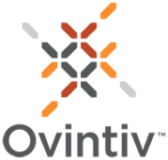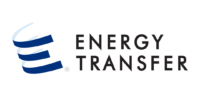INFORMATION ON FEDERAL LEGISLATION IN RESPONSE TO COVID-19
[av_post_meta av_uid=’av-8xupd’]
On Friday, March 27, 2020, President Trump signed the Coronavirus Aid, Relief, and Economic Security (CARES) Act into law. This law is meant to deliver relief to our country’s families, workers, and businesses during this unprecedented time of economic slowdown in reaction to the spread of coronavirus. This legislation includes many provisions that can be helpful to our membership in responding to this downturn so we want to share all of the information and resources we have.
Small Business Specific Information:
The U.S. Small Business Administration has provided information for small businesses to seek assistance.
Coronavirus (COVID-19): Small Business Guidance & Loan Resources
The U.S. Chamber of Commerce hosted a “National Small Business Town Hall” on March 27 to help small business owners understand what programs are available to them in the CARES Act. They have also created a summary of all small business coronavirus assistance provisions.
Summary and Video of National Small Business Town Hall
Summary of all small business assistance provisions
Contact your Bank:
Regulatory agencies have encouraged financial institutions to work with customers impacted by the coronavirus. Customers experiencing difficulties beyond their control should work directly with their financial institutions.
FAQs for Bank Customers (from FDIC)
CARE ACT PROVISIONS OF INTEREST (courtesy of Congressman Armstrong’s office):
Expanded Unemployment Insurance
The CARES Act expands the size and scope of unemployment benefits for laid-off Americans during this unprecedented time. The bill makes benefits more generous by adding a $600/week across-the-board payment increase to existing unemployment insurance amounts through the end of July. In addition, for those who need it, the bill provides an additional 13 weeks of benefits beyond what states typically allow.
The expansion in unemployment benefits expires at the end of 2020 in recognition of the temporary nature of this challenge.
Are self-employed, gig workers, and contractors eligible for unemployment?
Yes, the bill expands unemployment benefits to cover more workers including self-employed and independent contractors, like gig workers and Uber drivers, who do not usually qualify for unemployment. The bill also includes support to state and local governments and nonprofits so they can offer unemployment benefits to their employees.
Small Business Assistance
Paycheck Protection Loans
The CARES Act creates a new Paycheck Protection loan program administered by the Small Business Administration (SBA). Here is the topline information:
-
New SBA-backed Paycheck Protection loan program will help small businesses pay for expenses.
-
Loans taken by small businesses to keep employees on payroll may be forgiven.
-
501(c)(3)s will also be eligible for this program.
-
Federal government will forgive 8 weeks of cash flow, rent, and utilities at 100% up to 2.5x average monthly payroll.
-
The law provides $350 billion for this loan program.
Who is eligible for a Paycheck Protection loan?
-
Businesses and 501(c)(3)s with less than 500 employees are eligible for this new loan.
-
Sole proprietors, independent contractors, and self-employed individuals may also be eligible.
-
Physician practices are eligible regardless of how they are structured.
-
Small businesses in the hospitality and food industry that have less than $500 million in gross receipts with more than one location could also be eligible at the store and location level if the store employs less than 500 workers. This means that each store location could be eligible.
-
If your franchisor appears in the SBA’s National Franchise Directory, assistance will extend down to the franchisee at the store or location level.
Can small businesses can hire back previously fired employees and still have the loans forgiven? If so, what is the hire-back date?
Yes. There is flexibility in the program to allow businesses to hire new, or returning employees, by June 30, 2020, and still qualify under the headcount requirements.
Is there a cap on the loan amount?
The maximum loan amount will be the lesser of $10 million or 2.5 times the average monthly payroll based on the prior year’s payroll.
What expenses are eligible to be paid from the loan?
-
Payroll costs, including costs related to the continuation of group health care benefits during periods of paid sick, medical, or family leave, and insurance premiums; and employee salaries, commissions, or similar compensations
-
Payments of interest on any mortgage obligation (which shall not include any prepayment of or payment of principal on a mortgage obligation)
-
Rent (including rent under a lease agreement)
-
Utilities
-
Interest on any other debt obligations that were incurred before February 15, 2020
Where can I apply for this loan?
Both existing SBA lenders and new lenders brought into the program with the assistance of the Department of the Treasury will be able to offer these loans to eligible small businesses.
How fast will I receive the loan?
To increase speed and turnaround time within this new loan product, all lenders will have delegated authority. Delegated authority allows the lender to process, close, and service a loan without SBA review.
Additionally, all borrower and lender fees for Paycheck Protection loans will be waived. The Credit Elsewhere Test and all requirements for personal guarantees under Paycheck Protection loans will also be waived.
When do I have to start paying the loan back?
The CARES Act includes an automatic deferral of principal, interest, and fees for six months for Paycheck Protection loans.
What if I already have applied for or received an SBA Economic Injury Disaster Loan?
Businesses will be able to receive an Economic Injury Disaster Loan (EIDL) and a Paycheck Protection loan if they are used for different things. For example, a business can receive an EIDL for working capital and a Paycheck Protection loan for payroll assistance. There are no prepayment penalties on EIDLs and no prepayment penalties on Paycheck Protection loans. Additionally, a refinancing option is included.
What is the loan forgiveness tool, and how much can be forgiven?
The bill establishes a loan forgiveness tool that allows businesses that maintain payroll continuity from February 15, 2020, through June 30, 2020, as defined by headcount, to request forgiveness on the portion of the Paycheck Protection loan used on payroll costs; mortgage interest; rent; and utility costs over an 8-week period.
-
The amount forgiven will be reduced proportionally by any reduction in employees retained compared to the prior year and reduced by the reduction in pay of any employee beyond 25 percent of their prior year compensation.
-
The loan forgiveness program provides flexibility for businesses that re-hire workers that were previously laid off.
-
To receive loan forgiveness, a business will have to work with a lender to show their payroll was maintained through documentation.
-
Lenders will be held harmless on decisions of eligibility and SBA will purchase the loan after the lender grants approval.
Payroll Tax Credit
The CARES Act creates an Employee Retention Credit, which is a refundable payroll tax credit equal to 50 percent of up to $10,000 in wages per employee (including health benefits) paid by certain employers during the coronavirus crisis.
Who is eligible for the Employee Retention Credit?
The credit is available to employers:
-
Whose operations were fully or partially shut down by government order limiting commerce, travel, or group meetings due to coronavirus; or
-
Whose quarterly receipts are less than 50% for the same quarter in the prior year.
Wages paid to employees during the period which they are furloughed or otherwise not working (due to reduced hours) as a result of their employer’s closure or economic hardship are eligible for the credit. However, for employers with 100 or fewer employees, all employee wages qualify for the credit, regardless of whether they are furloughed or face reduced hours.
The credit is for wages paid by eligible employers from March 13, 2020 through December 31, 2020.
Can I receive both the Employee Retention Credit and an SBA-backed Paycheck Protection loan?
No. Employers that receive Paycheck Protection loans are not eligible for the Employee Retention Credit. Additionally, wages that qualify for the required paid leave credit are not eligible for the credit.
Additional Small Business Tax Relief
Delayed Payroll Tax Payment: The CARES Act authorizes employers to delay the payment of their 2020 payroll taxes until 2021 and 2022, providing businesses with an extra $300 billion in cash flow.
Carry-Back Losses: The CARES Act allows businesses to carry back losses from 2018, 2019, and 2020 to the previous 5 years, which will allow businesses access to immediate tax refunds.
Investment in Improvements: The CARES Act fixes cost recovery for investments in Qualified Improvement Properties, which will allow businesses that made these investments in 2018 and 2019 and receive tax refunds now.
State and Local Governments & Distressed Industries
The CARES Act provides emergency relief to distressed businesses as well as state and local governments, including $425 billion for loans, loan guarantees, and investments in support of facilities established by the Federal Reserve for purpose of providing liquidity to businesses, states, or municipalities through purchasing obligations or other interests directly from issuers of such obligations or other interests.
Who is eligible and how are the funds accessed?
All industries and firms are eligible to benefit from the broad financing from the Treasury fund to the extent they don’t receive sufficient assistance from other programs. How to access this support will depend on the size and model of the business and the exact facility used.
Regional airports/airlines – what assistance are they eligible to receive?
Passenger airlines are eligible for $25 billion in loan authority and $25 billion in grants to maintain their operations, employee payroll, and contracts around the country. The bill also includes $4 billion in loan authority and $4 billion in grants for cargo air carriers.
The bill provides $10 billion in grants through the Airport Improvement Program to support projects and operations at airports around the country. It also provides $3 billion in grants for contractors employed by the airlines to ensure that airlines can maintain existing operations contracts. The bill also includes $56 million for the Essential Air Service to maintain existing air service to rural communities.
What does this bill do to put restrictions on the airlines accepting grants and loans?
The loans come with conditions including: restrictions on executive compensation; prohibition on stock buybacks and the prohibition on paying dividends for the duration of the loan plus 12 months; the airline or business must maintain its existing employment levels through September 30, 2020, to the extent practicable, and in no case reduce it by more than 10%.
How does it support airports and affiliated contractors?
The bill provides $10 billion in grants to airports to help them maintain employment, continue operations, clean and sanitize to prevent the spread of coronavirus, and service airport construction debt. The bill also provides $3 billion in payroll support grants to airline contractors, including baggage handlers, wheelchair pushers, and caterers. These grants can only be used for paying employees and contractors that receive grants must maintain current employment levels through September 2020.






